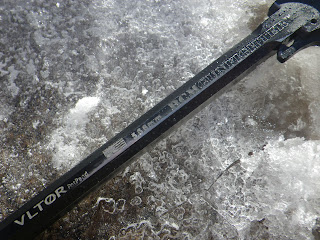1. Level out. Kicking your legs down into the water and kicking your body up out of the water is obviously inefficient. As tempting as it is to new or weak swimmers to tilt upwards so as to get more of the head out of the water and get closer to that lovely, lovely air, keep your body underwater and as parallel with the surface while remaining subsurface as possible. This will not only aid in increasing the stroke's efficiency, but it will also ingrain one of the essential tenets of the CSS into your muscle memory, that being signature reduction. A proper CSS will maintain a very low visual and audible profile. No white water, silent killers, etc.
2. Rotation, rotation, rotation. After college, I worked for a year in a grocery store. They always told me "Rotation, rotation, rotation" when referring to perishable products. Little did they know how useful this lesson would be. As you bring your first arm stroke down to your side, ROTATE your shoulders with it. You ought to end up at least on your SIDE, if not more on your back. One way to ingrain this motion into your stroke is to literally rotate all the way onto your back, survival float style, after each side stroke. Return to normal start position, almost face down, whenever you like. If you cant tell if youre doing it right, your NSW/NSO Mentor will be able to. If you have yet to make contact with one, get a buddy at the pool, explain to them what youre supposed to be doing, show them some videos maybe and have them observe your stroke. If you can conceive an axis along which you are traveling through the water, you ought to be rotating about this axis- just like long distance freestyle.
3. Lift your chin, not your head to the air. Follow your shoulder with your chin to learn to do this. As with other strokes, periodically lift your head up and check your direction to ensure you arent going to hit anyone/thing.
4. Breathe. This cannot be said enough and requires much more practice than most think. Breathing when swimming is not as easy and therefore not the same as breathing when running. If you are having trouble maintaining a sustainable breathing pattern when swimming, Swimmers Pullups are the first step in building breathing ability and timing. These do not focus on lung capacity, which is something else entirely. Make sure you have a good pool edge to practice on, something you would feel confident grabbing to exit the pool. Grab the edge and go under till your arms hit full extension. Pull yourself up out of the water until your arms hit full extension. Breathe in when you can and out when subsurface each time. Starting goal: sets of 20-30, no time limit just as fast as you can. Do with your Flutter Kicks, 10 Counts, etc. Dont hit your chin on the edge of the pool.
5. The current PST is a moderate swim in terms of length, but still, every little bit counts. Be sure to ingrain efficient movement only into your stroke and exclude any wasted movement. That means: Bring the hands close to the body when extending them forward. If you flutter kick, fine, thats your call. If you do not, do not allow the legs to move side to side while stroking with the arms. Do not go deeper than you have to in order to stay subsurface when kicking off the walls. Obviously, there is no reason to travel down and then up when all we need to do is go side to side. The kickoffs are your greatest opportunity in the PST, kick hard, use an efficient profile to get through the water, ride the kickoff out all the way. A far as making your second stroke efficient is concerned, you do not need to keep your arm fully extended during the stroke. It may curl inward towards your torso as you pull it down. Again, no need to pull you up out of the water, were just going sideways.
6. I had the same problem when I got into BJJ, everyone I saw getting into it did. Keep. It. Light. The PST is a series of tests, not just a swim. Naturally it is pointless to crank out an 8:30 500m CSS if you then get out and can only muster 40 pushups in 2:00. It is highly unlikely that you will get picked up or be allowed to continue training without retesting. So, keep it light. It may help to consider that you ought to be gliding, not fighting through the water. Keeping your exertion levels low will also allow you a little more room for error with your breathing.











